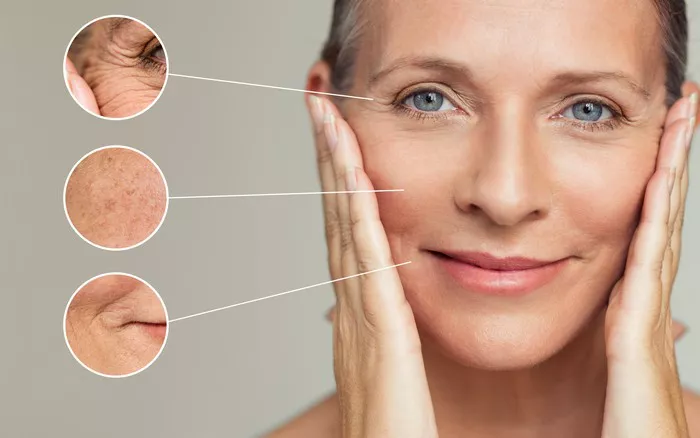Advancements in the field of aesthetics have introduced various innovative techniques for achieving a youthful and lifted appearance without resorting to invasive surgical procedures. One such technique gaining popularity is cosmetic threading, also known as thread lifting. This non-surgical procedure involves the use of specialized threads to lift and tighten sagging skin, resulting in a more rejuvenated and defined facial contour. In this article, we will delve into the details of cosmetic threading, its benefits, the procedure itself, and considerations for individuals exploring this minimally invasive option.
Understanding Cosmetic Threading:
Cosmetic threading is a minimally invasive procedure designed to address the effects of aging by lifting and repositioning sagging skin. It involves the insertion of biocompatible threads into the subcutaneous tissue of the face. These threads provide immediate lift and support to the skin, resulting in a natural and youthful appearance.
Benefits of Cosmetic Threading:
Cosmetic threading offers several benefits that make it an attractive option for individuals seeking facial rejuvenation:
a. Non-Surgical: Unlike traditional facelift surgery, cosmetic threading is a non-surgical procedure that involves minimal incisions and no removal of excess skin.
b. Natural Results: The threads create a natural lift, enhancing the contours of the face without creating an overdone or unnatural appearance.
c. Immediate Lift: One of the advantages of cosmetic threading is the immediate lift achieved during the procedure. Patients can notice visible results soon after treatment.
d. Minimal Downtime: Recovery time is relatively short, with most individuals returning to their daily activities within a few days.
e. Stimulates Collagen Production: Over time, the threads stimulate the production of collagen, which contributes to further skin tightening and improvement.
f. Customizable: Cosmetic threading can be tailored to each individual’s needs and desired level of enhancement.
The Cosmetic Threading Procedure:
The cosmetic threading procedure involves several steps:
a. Consultation: The process begins with a consultation with a qualified and experienced aesthetic practitioner. During this consultation, the practitioner will assess your facial anatomy, discuss your aesthetic goals, and determine whether you are a suitable candidate for the procedure.
b. Anesthesia: Local anesthesia is administered to ensure patient comfort during the procedure.
c. Thread Insertion: The practitioner inserts thin, biocompatible threads beneath the skin using a fine needle or cannula. The threads are strategically placed to lift and support specific areas of the face.
d. Lifting and Tightening: Once the threads are in place, they are gently pulled to achieve the desired lift and tightening effect. The excess thread is trimmed, and the procedure is complete.
e. Recovery and Aftercare: Patients may experience minor swelling, bruising, or discomfort immediately after the procedure. These symptoms typically subside within a few days. Following the aftercare instructions provided by the practitioner is essential for optimal healing and results.
Suitable Candidates for Cosmetic Threading:
Cosmetic threading is suitable for individuals who exhibit mild to moderate signs of facial aging, such as sagging skin and loss of volume. Good candidates for the procedure generally meet the following criteria:
a. Realistic Expectations: Individuals who have realistic expectations about the outcomes of the procedure are more likely to be satisfied with the results.
b. Healthy Skin: Candidates with relatively healthy and elastic skin tend to respond well to the procedure.
c. Age Consideration: While cosmetic threading can benefit individuals of various ages, it is more commonly sought by those in their 30s to 60s.
d. Personal Goals: Those seeking subtle improvements and a more youthful appearance without undergoing surgery may find cosmetic threading appealing.
e. Medical History: Candidates should disclose their medical history and any medications they are taking to the practitioner during the consultation.
Longevity and Maintenance:
The longevity of results from cosmetic threading varies from person to person. On average, results can last anywhere from 1 to 2 years. As the threads stimulate collagen production, individuals may experience ongoing skin improvement even after the threads have dissolved. To maintain the results, touch-up treatments can be performed as needed.
Consultation with an Aesthetic Practitioner:
Before undergoing cosmetic threading, it’s crucial to consult with a skilled and experienced aesthetic practitioner. During the consultation, the practitioner will evaluate your unique facial anatomy, discuss your goals, and recommend a treatment plan tailored to your needs.
Conclusion:
Cosmetic threading offers a non-surgical approach to achieving a lifted and rejuvenated facial appearance. With its immediate results, minimal downtime, and natural-looking outcomes, this procedure appeals to individuals seeking subtle enhancements without the commitment of surgical intervention. By understanding the procedure, evaluating candidacy factors, and consulting with a qualified aesthetic practitioner, individuals can make informed decisions that align with their aesthetic goals and preferences. As with any aesthetic procedure, thorough research and proper guidance are essential for achieving safe and satisfying results.

